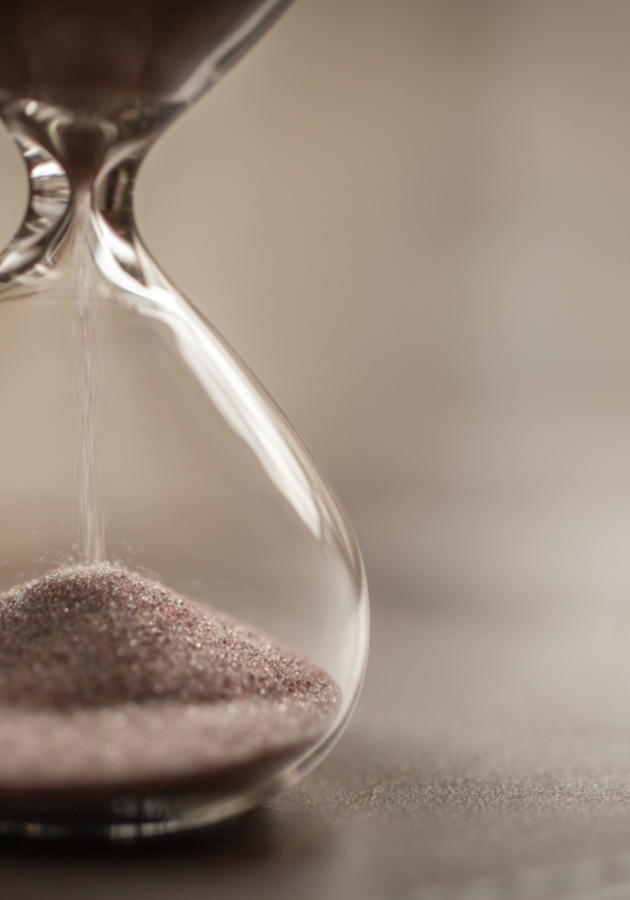Procrastination is not a problem, but the wrong solution to a more profound problem – anxiety. In “The Now Habit,” positive psychologist Neil Fiore explains how to deal with both. Get ready to find out yourself, while discovering why most guides to overcoming procrastination get almost everything wrong!
Why we procrastinate
Whether overt or implicit, whether coming from self-help books or your psychologists, the most frequent response to the question of why you procrastinate is undoubtedly because you’re lazy. In other words, your problem isn’t procrastination, but your character. If you weren’t so indolent and idealistic, and you just accepted the fact that life is dull and difficult, you would probably realize that tough jobs require hard work with no fooling around. Then, and only then, you would be able to get some things done. The underlying message is akin to the old Puritan credo: “Life is hard, so you need to learn some discipline.”
Unfortunately, behind all this well-meaning advice lies a basic misunderstanding of what procrastination really is. As a result, all those “how-to” books on procrastination and productivity and all those “work harder” suggestions by goodhearted parents, teachers, writers, and friends merely worsen the situation, practically creating a problem where there isn’t one. Procrastination, simply put, has nothing to do with specific traits or certain types of characters, and a lot to do with the fundamental aspects of our human nature.
“Procrastination is a mechanism for coping with the anxiety associated with starting or completing any task or decision,” writes Fiore. More specifically, it is our go-to solution to deal with tasks that are boring, overwhelming and can easily result in a failure. “From this definition,” he explains further, “it follows that those most vulnerable to procrastination are those who feel the most threatened by difficulty in starting a project, criticism, failure, and the loss of other opportunities that may result from committing to one project.” So, contrary to popular belief, procrastinators do not avoid work because they don’t want to do it; they avoid work because they are afraid they will not do it as they are expected to.
Procrastination is rewarding
Rather than a problem, procrastination is a go-to solution to a problem – which is, in fact, anxiety. It is, of course, the wrong solution, but this new understanding of procrastination explains why well-meaning advice and “how-to” books don’t work.
Namely, by telling us to “work harder lest we want to fail,” these books are actually making us aware of “the deeper anxieties about failure, perfectionism, and criticism” that lead us to procrastinate in the first place. Instead of helping us with our procrastinating habits, they are really reinforcing them. In time, they can even lead us to becoming addicted to avoiding or delaying boring tasks. Because what the authors of these books don’t understand is that procrastination is rewarding in at least three ways: “as an indirect way of resisting pressure from above; as a way of lessening fear of failure by providing an excuse for a disappointing, less-than-perfect performance; and as a defense against fear of success by keeping us from doing our best.”
Now, as complex and perfect as it is, our brain has problems discerning between good and bad rewarding experiences. Consequently, telling someone to stop being lazy when they are procrastinating is the same as telling someone to stop eating chocolate when they ar e on a diet – not only does such advice not work, it also makes things worse since it deepens self-doubt and sets in motion a pernicious cycle. It works something like this: Since procrastination follows perfectionistic demands and a fear of failure, when somebody is admonished for procrastinating, the criticism gets internalized. This leads to anxiety, depression, loss of confidence and a greater fear of failure. Ultimately, this results in a stronger need to use procrastination as a temporary escape.
Ten tools for overcoming procrastination
Fortunately, there is a way out of this cycle. In “The Now Habit,” Fiore offers 10 powerful tools for overcoming procrastination. In his explanation, their aim is to help readers rise above traditional “how-to” advice by attacking the underlying causes of procrastination. So, instead of teaching you how to be less lazy, the tools will help you lower your resentment toward work, make it easier for you to start working, improve the quality of your work, and stir your motivation. Let’s have a look at them all.
No. 1. Procrastination logs
“Knowing how you procrastinate,” writes Fiore, “is even more important than knowing why.” The reason is simple: “you can use your awareness of negative patterns to redirect your energy toward forming positive habits.”
The easiest way to do this is by keeping a procrastination log. In it, you should list the day, time, and the activity you avoid doing and link it to “a specific thought, justification, attempted solution, and resultant thought.”
Procrastination logs are after-the-fact planners – without them, you will never know how much time you’ve lost and what led you to procrastinate. On the other hand, using one just for a few days will help you identify your procrastination patterns and help you discern between feelings that lead toward achievements and those that lead toward self-criticism and further delay.
No. 2. Creating a safety net
Most people procrastinate not only because they give too much importance to a task, but also because they use their perfectionism to raise it “100 feet above the ground,” so that any mistake would be tantamount to death. This leaves them frozen with anxiety and with procrastination as their only escape. After all, not making a step when you are supposed to walk on a wire is better than making the wrong one!
To deal with this problem, Fiore writes, you need to put “a psychological safety net under your high-wire act so that you can lessen your fear of failure and learn how to bounce back from mistakes with renewed purpose.” In simpler words, you need to have a plan B and a plan C rather than being insistent on plan A as your only way to achieve success and survive. Never start a task as if it’s the most important thing in the world. And always tell yourself that whatever happens, you will inevitably survive.
No. 3. Reprogramming negative attitudes through positive self-talk
“Have to’s” and “should’s” are messages of stress and depression. They communicate resistance, victimhood, confusion, and failure. Repeated over and over again, they force your subconscious mind into pushing back; hence your resentment and resistance to work.
To overcome procrastination, you must adopt a new, more positive language. Ironically, it starts with saying “no” in an assertive and non-defensive way, as opposed to saying “no” with the value of “maybe” – as in “no, I’ll think about it later.” More importantly, positive self-talk is all about replacing five age-old “have to’s” and “should’s” with five self-statements that emphasize choice and eagerness. So, starting today, start saying:
- “I choose to,” instead of, “I have to”.
- “When can I start?” instead of, “I must finish”.
- “I can take one small step,” instead of, “This project is so big and important”.
- “I can be perfectly human,” instead of, “I must be perfect”.
- “I must take time to play,” instead of, “I don’t have time to play”.
No. 4. Using the symptom to trigger the cure
Habits consist of three components: a trigger (the external cause that activates a habit), a routine (the actual habit) and a reward (the reason why we do the habit). You can hack this cycle by changing the routine while keeping the trigger and the reward. Your brain is only interested in those two anyway and uses the habit as a way to connect them. In other words, you can “use old habits to evoke and strengthen the formation of new, positive habits.”
No. 5. Guilt-free play
It wouldn’t be wrong at all to reclassify homo sapiens as homo ludens – that is, “the playing man.” Just like your pet cat or a lion in the wilderness, we too learn what to do and how to do it through games and amusing pastimes. Unfortunately, we often grow to see play as being separate from learning and work as being the opposite of play. This is not only wrong, it is also damaging.
Even if you don’t like your work, you must change this attitude immediately and start strategically scheduling your leisure time. This will help you shift your focus from work to play and create a subconscious urge in you to return to work once your playtime is over. Almost paradoxically, guilt-free play is essential not only to minimizing procrastination, but to attaining quality work as well.
No. 6. The reverse calendar
Most self-help guides to overcoming procrastination will tell you, quite sensibly, to motivate yourself by breaking down a large project in smaller, doable steps. What they won’t tell you is that you are probably not psychologically adept at planning ahead. If you were, you wouldn’t be a procrastinator in the first place.
To tackle this problem, Fiore suggests using a reverse “step-by-step calendar of your path to achievement, with adequate time to rest and to fully appreciate your accomplishments.” Put simply, plan the other way round, starting from the ultimate deadline and ending with today.
No. 7. Making worry work
As noted, “procrastination is an ineffective way to cope with worrying because it stalls action and simply piles up more worries for you.” To break this cycle, ask yourself the following six questions before starting any project:
- What is the worst that could happen?
- What would I do if the worst really happened?
- How would I lessen the pain and get on with as much happiness as possible if the worst did occur?
- What alternatives would I have?
- What can I do now to lessen the probability of this dreaded event occurring?
- Is there anything I can do now to increase my chances of achieving my goal?
Though simple, this six-step process will help you create safety and “direct the blocked energy of anxiety toward constructive preparation for potential danger.
No. 8. The Unschedule
In Fiore’s definition, “the Unschedule is a weekly calendar of committed recreational activities that divides the week into manageable pieces with breaks, meals, scheduled socializing, and play. In addition, it’s a record of your productive, uninterrupted work.”
To make it work, think of it as “a time clock that you punch in as you start work and punch out when you take credit for your progress.” Fill it in with work on projects only after completing at least one-half hour and don’t take credit for periods of work that take less. Keep track of the number of quality hours worked each day and always leave at least one full day a week for recreation and small chores.
Think small – 30 minutes of quality work – and focus on starting: finishing will take care of itself if you just keep starting. Finally, never end “down” – that is to say, never stop working when you’re blocked or at the end of a section. Instead, take a page out of Hemingway’s book: end at the most interesting part to keep your motivation stirred for the following “start.”
No. 9. Working in the flow state
Named by Mihály Csíkszentmihályi, the flow state is colloquially known as “being in the zone” and it means being fully immersed in what you’re doing. Characteristics of the flow state include “calm, focused energy; time expansion; delight at new ideas; ease at avoiding or solving problems; and enhanced concentration.”
To stimulate the flow state, try putting yourself in a “it’s only the first draft” state of mind. Create now – you’ll edit later. Enjoy the process of fashioning something new in the knowledge that it’s not the final version.
No. 10. Controlled setbacks
It’s easier to face the worst-case scenario if you’ve rehearsed your reactions beforehand. So, try planning controlled setbacks while working to learn when you are most likely to procrastinate, and how. Then, “wire in” an appropriate Now Habit technique to train your brain into both anticipating the temptation to procrastinate and fixing it immediately.
Final Notes
Sometimes hailed as “one of the most effective programs to combat procrastination,” “The Now Habit” by Neil Fiore is indeed different from most other guides that tackle the same problem. It’s more than worth giving it a try.
12min Tip
Keep procrastination logs to know when and why you lose time and delay work. Use reverse calendars to break down your projects into smaller steps – from the ultimate deadline backward.





























